NLP Question Bank PDF

| Title | NLP Question Bank |
|---|---|
| Author | Golden Era Cartoons |
| Course | Natural language Processing |
| Institution | University of Mumbai |
| Pages | 4 |
| File Size | 47.2 KB |
| File Type | |
| Total Downloads | 7 |
| Total Views | 89 |
Summary
Question BankSub : Natural Language processingME COMP 2016 SEM I****Q What is Natural language processing ( NLP)? Discuss various stages involved in NLP process with suitable example. What is Natural Language Understanding? Discuss various levels of analysis under it with example. Q What do you mean...
Description
Question Bank Sub : Natural Language processing ME COMP 2016 SEM I **************************************************************** Q.1 What is Natural language processing ( NLP) ? Discuss various stages involved in NLP process with suitable example. What is Natural Language Understanding? Discuss various levels of analysis under it with example. Q.2 What do you mean by ambiguity in Natural language? Explain with suitable example. Discuss various ways to resolve ambiguity in NL. What do mean by lexical ambiguity and syntactic ambiguity in Natural language? What are different ways to resolve these ambiguities? Q.3 what is morphology. Why do we need to do Morphological Analysis? Discuss various application domains of Morphological Analysis. Q.4 List various applications of NLP and discuss any 2 applications in detail. Q.5 Explain derivational & inflectional morphology in detail with suitable examples. What are morphemes? What are different ways to create words from morphemes? Q.6 what do you mean by stemming. Explain Porter’s stemming algorithm in detail. What is the need of preprocessing for text data in natural language? Explain the steps of preprocessing (Tokenization , stopword removal and stemming) with example. Q.7 what is language model? Explain the use of Language model? Q.8 Write a note on N-Gram language Model. Problem on Ngram model Consider following Training data: I am Sam Sam I am Sam I like Sam I do like do I like Sam Assume that we use a bigram language model based on the above training data.
What is the most probable next word predicted by the model for the following word sequences? (1) Sam ... (2) Sam I do ... (3) Sam I am Sam ... (4) do I like ... (Solution: Bigram probabilities: P(Sam|) = 3/5 P(I|) = 1/5 P(I|Sam) = 3/5 P(|Sam) = 2/5 P(Sam|am) = 1/2 P(|am) = 1/2 P(am|I) = 2/5 P(like|I) = 2/5 P(do|I) = 1/5 P(Sam| like) = 1/3 P(|like) = 2/3 P(like|do) = 1/2 P(I|do) = 1/2 (1) and (3): “I”. (2): “I” and “like” are equally probable. (4): ) Q.9 what is the role of FSA in Morphological analysis? Explain FST in detail. Q.10 what is POS tagging? Explain types of word classes in English NL. Also comment on possible tag sets available in ENGLISH NL. Explain open and closed word classes in English Language. Comment on possible tag sets available in ENGLISH NL. Show how the tags are assigned to the words of following sentence: “Time flies like an arrow.” Q.11 Why POS tagging is hard? Discuss possible challenges to be faced while performing POS tagging. Q.12 Discuss various approaches/algorithms to perform POS tagging. Q.13 Explain in detail Rule based POS tagging/ Stochastic (HMM) POS tagging/ Hybrid POS tagging. Q.14 Explain transformation based POS tagging with suitable example. Q.15 what do you mean by constituency? Explain following key constituents’ with suitable example w.r.t English language: 1: Noun phrases 2) Verb phrases 3) Prepositional phrases . Q.16 Explain CFG with suitable example . Discuss following potential problems in CFG such as 1) Agreement 2) Sub categorization 3) Movement . Q.17 what is parsing? Explain Top-down & Bottom-up approach of parsing with suitable example. Q.18 W.r.t following Grammar show Shift reduce parsing of following sentences Book that flight Does that flight include meal S → NP VP S → Aux NP VP S → VP NP → Det NOM NOM → Noun NOM → Noun NOM VP → Verb
VP → Verb NP Det → that | this | a | the
Noun → book | flight | meal | man
Verb → book | include | read
Aux → does
Q.19 Compare between Top-down & Bottom-up parsing approach. Q.20 what is semantic analysis? why semantic analysis difficult? Explain various approaches to semantic analysis. Q.21 Discuss in detail attachments for fragments of English sentences. Q.22 Explains with suitable examples following relationships between word meanings: Homonymy Hyponomy
Polysemy Meronomy
Synonymy
Antonymy
Hypernomy
What is semantic analysis? Discuss different semantic relationships between the words. Q.23 Write a note on “WordNet “? What is WordNet? How is “sense” defined in WordNet? Explain with example. Q.24 What do you mean by word sense disambiguation( WSD ) ? discuss dictionary based approach for WSD . What do you mean by word sense disambiguation (WSD ) ? Discuss knowledge based WSD . Q.25 What do you mean by word sense disambiguation (WSD ) ? discuss machine learning based( Navie based ) approach for WSD. Explain how a supervised learning algorithm can be applied for word sense disambiguation. Q.26 Define discourse & pragmatic analysis . Discuss reference resolution problem in detail . Q.27 discuss following referring expressions with suitable examples w.r.t reference phenomena Indefinite NPs Definite NPs
Pronouns
Demonstratives and Oneanaphora.
Q.28 Explain three types of referents that complicate the reference resolution problem. Q.29 Write a note on Syntactic and Semantic Constraints on Coreference. Q.30 Discuss various Preferences in Pronoun Interpretation with suitable example. Q.31 Explain in detail Lappin and Leass’s Algorithm for Pronoun Resolution with suitable example. Q.32 Describe in detail centering algorithm for reference resolution. Q.33 write a note on : 1)Machine translation, Extraction
2)Information retrieval vs Information
3) Question answers system 4) Text Categorization sentiment analysis.
5) Text Summarization
6)...
Similar Free PDFs

NLP Question Bank
- 4 Pages

Dmdw-question bank - question bank
- 17 Pages

MCQ - NLP - MCQ for NLP
- 75 Pages

Question bank
- 8 Pages
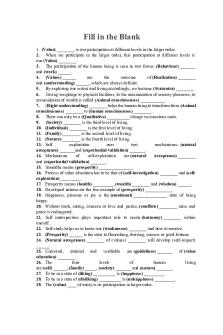
Question Bank 3question bank
- 6 Pages

Question BANK
- 19 Pages
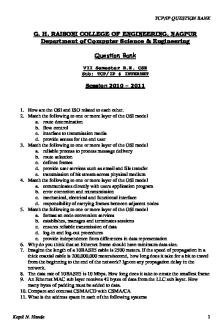
Tcp-ip-question-bank
- 25 Pages

Chapter 4 - Question Bank
- 28 Pages

DIP Question Bank Sheetal
- 14 Pages
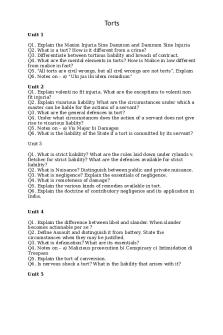
Torts Question Bank
- 2 Pages
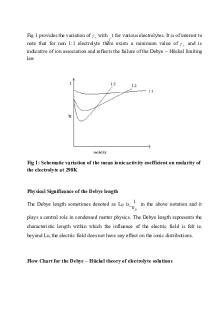
QB5 - Question Bank 5
- 104 Pages

Assessment Question Bank 1
- 22 Pages
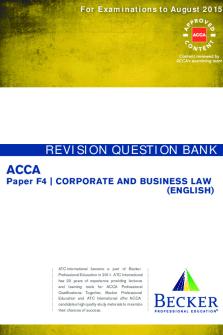
Revision Question Bank 60
- 154 Pages
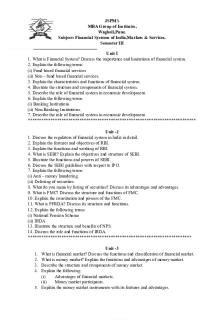
Fsims Question Bank
- 4 Pages

11. Autocad question bank
- 14 Pages
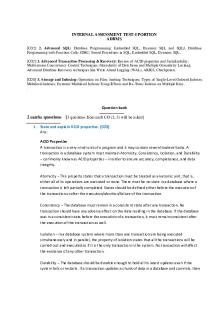
Question bank Adbms - solution
- 45 Pages
Popular Institutions
- Tinajero National High School - Annex
- Politeknik Caltex Riau
- Yokohama City University
- SGT University
- University of Al-Qadisiyah
- Divine Word College of Vigan
- Techniek College Rotterdam
- Universidade de Santiago
- Universiti Teknologi MARA Cawangan Johor Kampus Pasir Gudang
- Poltekkes Kemenkes Yogyakarta
- Baguio City National High School
- Colegio san marcos
- preparatoria uno
- Centro de Bachillerato Tecnológico Industrial y de Servicios No. 107
- Dalian Maritime University
- Quang Trung Secondary School
- Colegio Tecnológico en Informática
- Corporación Regional de Educación Superior
- Grupo CEDVA
- Dar Al Uloom University
- Centro de Estudios Preuniversitarios de la Universidad Nacional de Ingeniería
- 上智大学
- Aakash International School, Nuna Majara
- San Felipe Neri Catholic School
- Kang Chiao International School - New Taipei City
- Misamis Occidental National High School
- Institución Educativa Escuela Normal Juan Ladrilleros
- Kolehiyo ng Pantukan
- Batanes State College
- Instituto Continental
- Sekolah Menengah Kejuruan Kesehatan Kaltara (Tarakan)
- Colegio de La Inmaculada Concepcion - Cebu